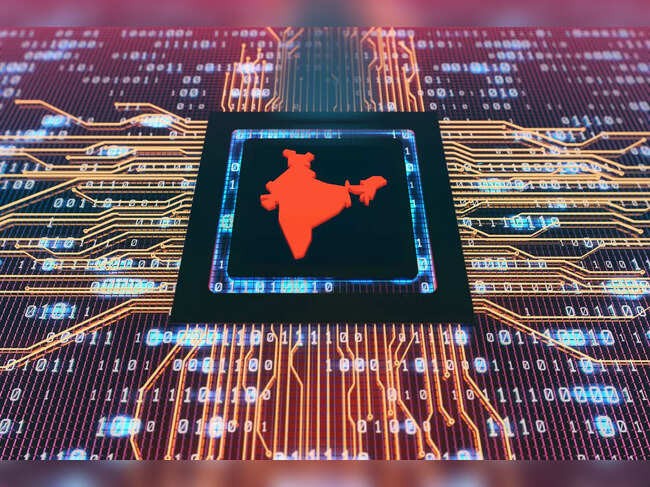Copyright infringement not intended
Picture Courtesy: News on Air
Context:
The Union Cabinet has approved a Scheme to Promote Manufacturing of Sintered Rare Earth Permanent Magnets (REPM), with a financial outlay of ₹7,280 crore.
What are rare earth magnets?
Rare Earth Magnets are extremely powerful permanent magnets made from alloys of rare earth elements, primarily from the lanthanide series.
They are 10–15 times stronger than conventional ferrite or alnico magnets.
Types of Rare Earth Magnets:
Neodymium Iron Boron (NdFeB) Magnets (Neodymium Magnets)
Composition
- Alloy of Neodymium (Nd), Iron (Fe), and Boron (B).
- Can be enhanced with Dysprosium (Dy) or Praseodymium (Pr) to improve high-temperature performance.
Key Characteristics
- Strongest permanent magnets known, with high magnetic energy product.
- High coercivity (resistance to demagnetization).
- Lightweight, compact, and ideal for miniaturization.
Advantages
- Extremely high power-to-weight ratio.
- Crucial for technologies requiring compact high-efficiency motors.
- Commercially widespread and relatively cost-effective.
Limitations
- Sensitive to high temperatures, unless doped with Dy/Pr.
- Prone to corrosion; requires coatings (nickel, epoxy).
- Global supply vulnerability due to dependence on critical rare earth elements.
Applications
- Electric Vehicle (EV) traction motors
- Wind turbine generators
- Consumer electronics (earphones, speakers, smartphones)
- Hard disk drives, computer cooling systems
- Industrial automation & robotics
- Magnetic resonance equipment
- Medical devices and implants
- Drones, satellites, and precision instruments
Samarium–Cobalt (SmCo) Magnets
Composition
- Alloy of Samarium (Sm) and Cobalt (Co).
- Often includes small amounts of iron, copper, zirconium.
Key Characteristics
- Lower magnetic strength than NdFeB but much higher thermal stability.
- Very high resistance to corrosion and oxidation.
- Excellent performance in extreme operating environments.
Advantages
- Can operate at very high temperatures (up to 300–350°C).
- More stable in corrosive environments, even without coatings.
- Low risk of demagnetization under radiation or thermal stress.
Limitations
- More expensive due to cobalt supply chain constraints.
- Slightly lower magnetic energy compared to NdFeB.
- Brittle and requires careful engineering during handling.
Applications
- Aerospace & defence (missile systems, jet engines)
- High-temperature sensors & actuators
- Precision-guided munitions
- Satellite systems and space-grade electronics
- Oil & gas downhole drilling equipment
- Medical devices requiring high stability
- High-performance motors used in industrial and military sectors
Scheme to Promote Manufacturing of Sintered Rare Earth Permanent Magnets:
Key Features:
Capacity Creation
The scheme focuses not just on adding production capacity but on building a complete industrial ecosystem for Rare Earth Permanent Magnets (REPMs).
- It aims to establish large-scale, globally competitive manufacturing capacity capable of meeting India’s rising domestic demand and participating in global value chains.
- Emphasis is on end-to-end integration, which means the sector will develop capabilities across the full materials and technology continuum — from chemical processing of rare earth oxides, to metallurgical refining, to alloy production, and finally to high-precision magnet fabrication.
Beneficiary Selection
The scheme adopts a selection mechanism designed to encourage competition, technological excellence, and efficiency.
- Allocating capacity to multiple beneficiaries ensures diversification, reduces concentration risk, and creates healthy intra-industry competition.
- Global competitive bidding allows participation from both domestic and international players, ensuring that the industry benefits from the best available technologies, processes, and global expertise.
Tenure of the Scheme
The 7-year duration reflects the long gestation nature of advanced materials and high-technology manufacturing.
- The initial 2-year window recognises that establishing integrated REPM facilities requires substantial time for infrastructure creation, technology transfer, precision equipment installation, workforce skill development, environmental clearances, and supply-chain alignment.
- The remaining years support scaling up operations, stabilising production, and achieving operational maturity.
Financial Support
The scheme is designed around performance-linked and capability-building incentives, rather than simple subsidies.
- The financial framework prioritizes capital formation, helping firms acquire the sophisticated technologies and high-purity processing systems essential for REPM manufacturing.
- It supports advanced manufacturing practices, automation, and adoption of globally benchmarked quality standards.
- The scheme emphasizes R&D, testing, and material science innovation, recognizing that permanent magnet technology continuously evolves with new compositions, thermal coatings, and application-specific performance requirements.
Objectives of the Scheme
- Develop India’s first integrated manufacturing ecosystem for rare earth permanent magnets.
- Reduce import dependence, particularly on China.
- Support EV mobility, renewable energy, electronics, and defence
- Foster advanced materials manufacturing and high-skilled jobs.
- Contribute to India’s Net Zero 2070
- Build capacity to meet rising domestic demand, which is expected to double by 2030.
Why the scheme is significant for India?
Critical for EVs, Renewables, Defence & Electronics
- Electric Vehicles: According to International Energy Agency Global EV outlook report, NdFeB magnets are used in 92% of EV traction motors globally because they improve power efficiency by 15–20% compared to induction motors.
- Wind Turbines: According to Ministry of New and Renewable Energy, a direct-drive offshore wind turbines require 600–800 kg of REPMs per MW; India’s wind target of 140 GW by 2030 implies massive magnet demand.
- Defence & Aerospace: Used in jet engines, missile guidance, radars, drones, UAVs, actuators, and satellite systems.
- Example: BrahMos missile, LCA Tejas, and Akash systems rely on high-precision magnet components sourced globally.
India’s Import Dependence
- India currently imports almost 100% of its rare earth magnets, with China supplying over 87–90% of global REPM output
- China also controls 60–70% of world rare earth refining, creating a bottleneck where geopolitical risks can disrupt India’s EV, defence, and renewable sectors.
Creation of indigenous high-tech supply chains: According to NITI Aayog report, India’s REPM consumption is expected to double by 2030, driven by EVs, wind energy, robotics, and electronics.
Essential for Net Zero 2070: According to IPCC report, REPM-based technologies reduce lifecycle emissions of EVs and wind turbines by up to 12%.
Conclusion:
The REPM manufacturing scheme marks a strategic pivot in India’s industrial and energy transition agenda. By building an integrated, domestic value chain for high-performance magnets, India reduces its chronic import dependence, secures critical technologies for EVs, defence, and renewables, and strengthens its position in global advanced-materials markets. The initiative not only boosts self-reliance but also supports long-term goals of economic competitiveness and Net Zero 2070.
Source: News on Air
|
Practice Question
Q. Discuss the strategic and economic significance of establishing integrated Rare Earth Permanent Magnet manufacturing facilities in India. (250 words)
|
Frequently Asked Questions (FAQs)
Because India’s demand for magnets is rising sharply due to EVs, renewables, and defence, but imports dominate the supply.
Five, via global competitive bidding.
Seven years, including a two-year gestation period.












